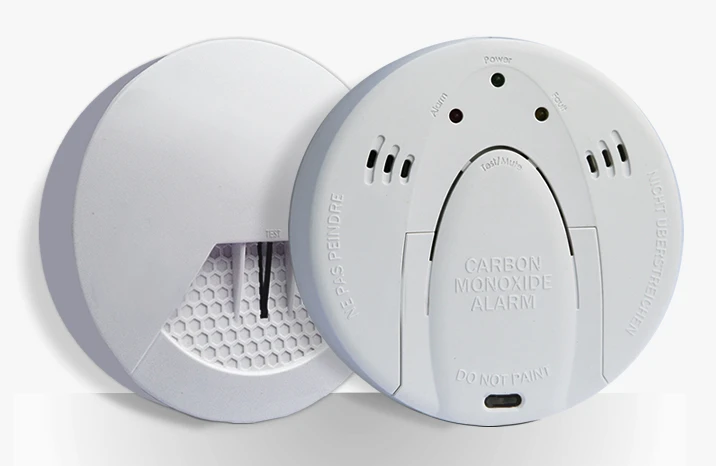Smoke and Carbon Monoxide Detectors are Here!
Posted May 7th, 2013 by SimpliSafe

Welcome to the family, Smoke and CO Detectors!
The SimpliSafe team is happy to announce that Smoke Detectors and Carbon Monoxide Detectors are now available! The new detectors integrate seamlessly into the rest of the system, and the existing monitoring plans. They're easy to install (via mounting bracket), easy to order online, and just as good-looking as the rest of the family, if we do say so ourselves.
They may not technically be criminals, but smoke and fire are on the public enemy list. The latest available data from the National Fire Prevention Association (NFPA) shows that fires caused over 3000 deaths, 17500 injuries, and $11.7 million in property damage in 2011.
These statistics look even more tragic in the light of other numbers that reveal how easy it is to prevent such tragedies—homes that contain working smoke detectors suffer 90% less property loss and 75% fewer fatalities than homes that don't. SimpliSafe Smoke Detectors use photoelectric technology to detect fires early, in the smoldering stage, before they get big enough to block exits and cause large-scale damage.

When it comes to protecting your family, carbon monoxide detection is as vital as it is overlooked. CO is known as "the silent killer"—you can't see, smell, or taste it, but inhale too much of it and you'll find yourself suffering from headaches, nausea, fatigue, or worse. According to the Center for Disease Control, CO poisoning causes about 500 deaths and 15,000 ER visits every year.
And potential sources are everywhere—CO can be produced by anything that improperly burns carbon fuel, including gas-powered furnaces, unvented space heaters, leaking chimneys, and vehicles. The SimpliSafe Carbon Monoxide Detector is designed to warn homeowners that CO is in the air long before it reaches health-damaging levels. In addition to installing CO detectors, it's important to properly maintain and check up on your fuel-burning appliances to prevent leaks in the first place.

According to NFPA standards, smoke detectors should be installed outside of sleeping areas, and on each floor of your home. It's recommended that additional sensors be placed in living rooms, dining rooms, kitchens, attics, and basements. Carbon monoxide sensors should be installed in or near bedrooms and high-traffic living areas, but not in kitchens, garages, or furnace rooms.
We would like to thank everyone for their patience while we developed sensors that live up to the quality and affordability standards that our customers deserve.
If you haven't yet, order yours in a jiffy at our online store. Hurry—they're flying off the shelves!